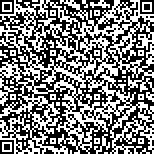|
| 引用本文: | 谷孝鸿,曾庆飞,毛志刚,陈辉辉,李红敏.[专稿]太湖2007-2016十年水环境演变及“以渔改水”策略探讨.湖泊科学,2019,31(2):305-318. DOI:10.18307/2019.0201 |
| GU Xiaohong,ZENG Qingfei,MAO Zhigang,CHEN Huihui,LI Hongmin.Water environment change over the period 2007-2016 and the strategy of fishery improve the water quality of Lake Taihu. J. Lake Sci.2019,31(2):305-318. DOI:10.18307/2019.0201 |
|
| |
|
|
| 本文已被:浏览 10926次 下载 7861次 |

码上扫一扫! |
|
|
| [专稿]太湖2007-2016十年水环境演变及“以渔改水”策略探讨 |
|
谷孝鸿1, 曾庆飞1, 毛志刚1, 陈辉辉1, 李红敏1,2
|
|
1.中国科学院南京地理与湖泊研究所湖泊与环境国家重点实验室, 南京 210008;2.中国科学院大学, 北京 100049
|
|
| 摘要: |
| 太湖水环境是国内外关注的焦点,其生态环境质量影响到流域经济社会发展.2007年太湖水危机事件,催生了对太湖的综合整治.本文基于2007-2016十年对太湖水质与蓝藻水华面积等的监测,分析了太湖水环境的演变趋势.太湖十年水质变化阶段性明显,2008-2012年各项水质指标下降明显,而后趋于平缓,近3年个别指标如总磷、叶绿素a浓度等呈现快速上升的反弹趋势;另外,水质指标在空间上的差异性逐步缩小,原来污染严重的西北部水域水质改善效果较为显著,其正从"污水湖"向"自然湖"状态过渡,而原来水质相对较好的东南部水域水质却逐步下降.本文也综述分析了太湖鱼类群落结构变化与水质环境变化的相关性,基于太湖局部水域的鱼类调控实践,提出了太湖现阶段"以渔改水"的鲢鳙控藻非经典生物操纵与鱼类结构调控的经典生物操纵结合的渔业途径.湖泊富营养化治理需要充分关注到鱼类对湖泊浮游生物和水质变化的重要驱动效应,需要充分考虑到鱼类群落结构优化和食物网调控对环境的改善作用. |
| 关键词: 水环境 演变 鱼类 群落结构 “以渔改水” 太湖 |
| DOI:10.18307/2019.0201 |
| 分类号: |
| 基金项目:国家科技支撑计划项目(2015BAD13B00,2015BAD13B06)资助. |
|
| Water environment change over the period 2007-2016 and the strategy of fishery improve the water quality of Lake Taihu |
|
GU Xiaohong1, ZENG Qingfei1, MAO Zhigang1, CHEN Huihui1, LI Hongmin1,2
|
|
1.State Key Laboratory of Lake Science and Environment, Nanjing Institute of Geography and Limnology, Chinese Academy of Sciences, Nanjing 210008, P. R. China;2.University of Chinese Academy of Sciences, Beijing 100049, P. R. China
|
| Abstract: |
| Currently,water environment in the Lake Taihu has become one of the focuses due to its importance to the rapid growth of economy and the process of society in the Lake Taihu Basin. "Water Crisis" of the Lake Taihu in 2007 has resulted in a series of comprehensive treatment program for its eco-environmental improvement. Based on the water quality data from 2007 to 2016, the characteristics and dynamic variation of water environment in the last decade were analyzed. The results showed that the periodic change of water quality in Lake Taihu was obvious. All water quality indexes continued to decline and then leveled off over the period of 2008 to 2012, while certain indexes, such as total phosphorus and chlorophyll-a concentration, showed a rapidly increasing trend in nearly three years. Additionally, the spatial heterogeneity of water quality in the Lake Taihu decreased. As for the heavily polluted northwestern waters, changing from "contaminated" to "natural" status, had acquired a massive improvement in the ecological environment, while the water quality of the southeastern waters had gradually deteriorated. Based on the correlation analysis between the fish community structure and water quality variation in Lake Taihu, and combined with the practice of certain fish bio-manipulation projects in local lake regions, a bio-manipulation approach "Fishery improve the water quality" combined using traditional and non-traditional bio-manipulations was proposed. Eutrophication control in lakes requires sufficiently concern the irreplaceable role of fish in driving plankton community and water quality modification, as well as considering the advantageous effects of structural optimization of fish community and food web manipulation. |
| Key words: Water environment evolution fish community structure fishery improve the water quality Lake Taihu |
|
|
|
|